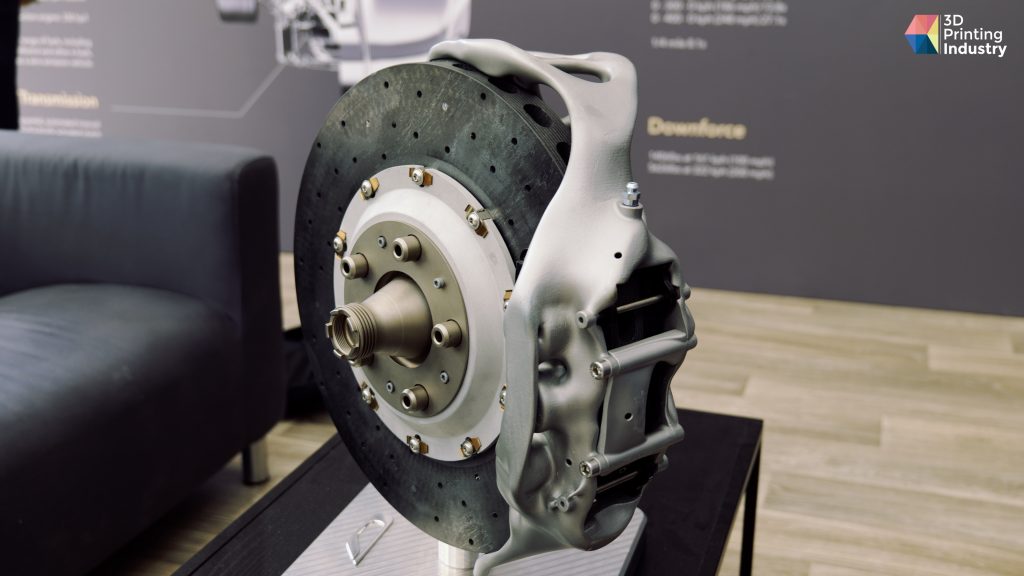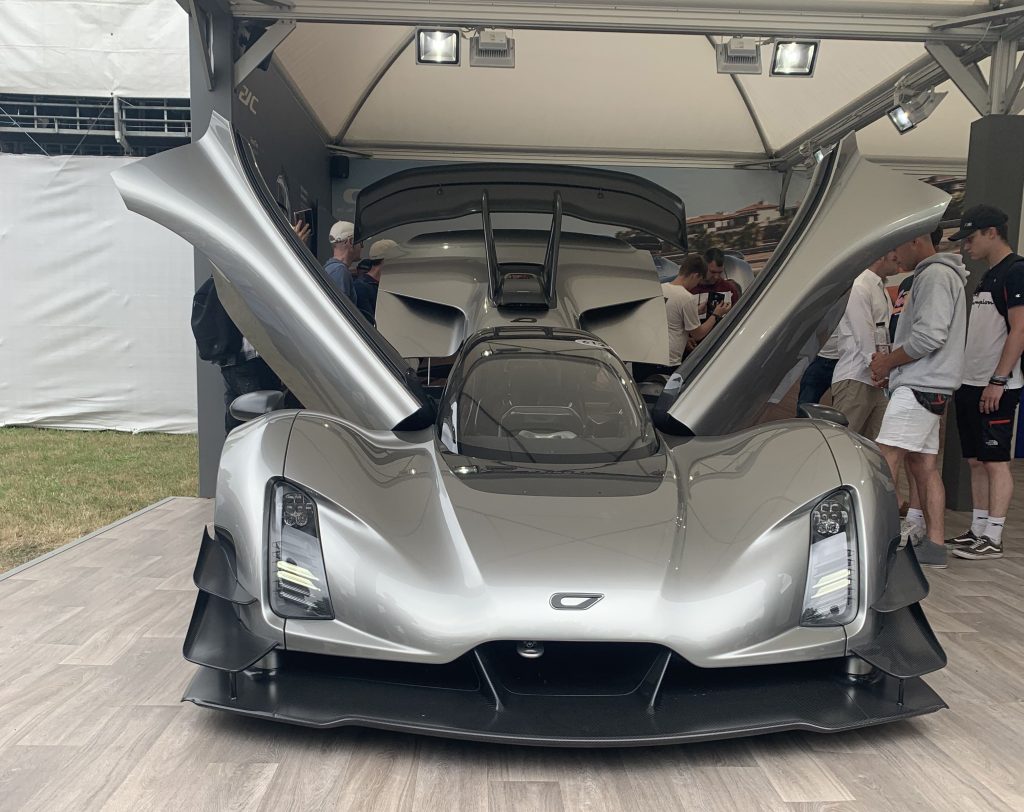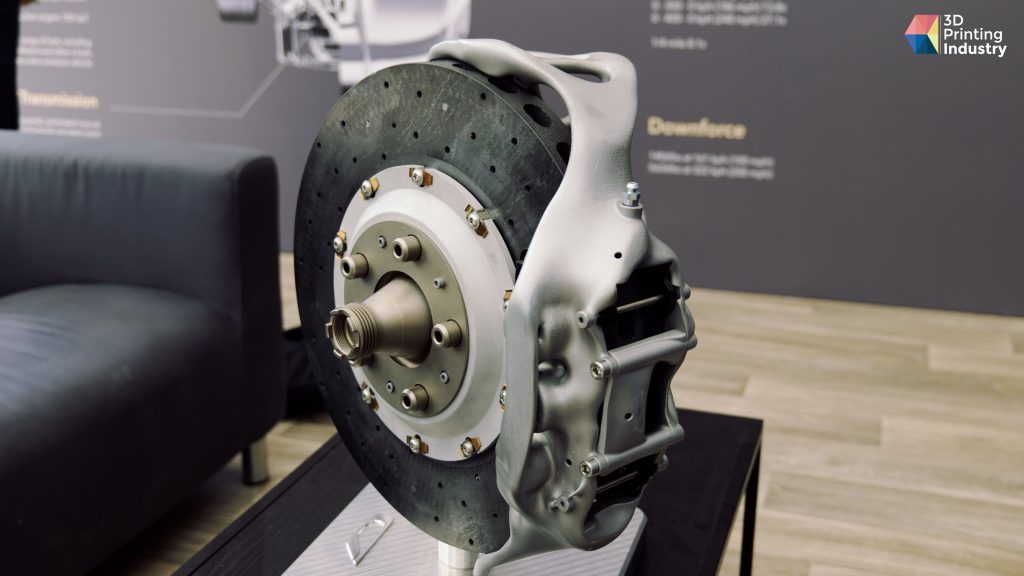Divergent Adaptive Production System (DAPS) developer Divergent Technologies has gained access to another $80 million worth of capital.
While Divergent Technologies raised $160 million in April 2022, it can now withdraw a further $60 million from a venture loan facility and $20 million from a revolving line of credit, should it need to. Having already deployed DAPS to build the Czinger 21C hypercar, the firm has stated that in future, it plans to use part of this funding as working capital, and at least some of the rest to finance business growth.
Divergent Technologies’ DAPS system
In essence, DAPS is an automated hardware-software assembly platform that’s designed to serve as an end-to-end alternative to traditional automotive production processes. Featuring a combination of 3D printing and generative design technologies, the system provides users with a means of building multiple different car models on the same machine.
This ‘model-agnostic’ approach is also said to allow for rapid iteration, as DAPS’ ability to computationally engineer, print, and assemble parts on-the-fly, allows for the realization of innovative designs at pace. Another benefit of the platform, according to the firm’s CEO Kevin Czinger, is that its flexible setup makes it more efficient than existing car-making methods, and therefore more sustainable too.
“DAPS makes it possible for the first time for manufacturers to forego the capital-intensive static design system they have been accustomed to for over a century, and utilize a variable cost flexible design system that is significantly more efficient,” explains Czinger. “Through this added efficiency, DAPS radically reduces the impact of manufacturing on the environment, thereby making a meaningful contribution to global sustainability.”
As of March 2022, Divergent Technologies and its sister business Czinger Vehicles, had gained 509 patents to protect their technologies, and the former boasts of being a supplier of chassis and suspension systems to ‘major OEMs.’
Having gained access to another $80 million in funding, via loan facilities provided by the Horizon Technology Finance Corporation and Bridge Bank respectively, the company has now positioned itself for even further growth. While access to $40 million of the larger $60 million facility is set to depend on Divergent meeting milestones, the $20 million line of credit isn’t subject to the same restrictions.

Building the record-breaking 21C
No doubt, the highest-profile application of Divergent Technologies’ DAPS system to date has been in the production of the Czinger 21C hypercar. While the vehicle’s top-line figures, including its $2 million price tag and 0-62 mph speed of 1.9 seconds, have grabbed all the media headlines, these are actually the result of impressive technological innovation under the hood.
As Czinger explained to 3D Printing Industry at the 21C’s Goodwood shakedown, almost all the car’s chassis frame structure is DAPS-printed, as is its suspension system, with the exception of parts such as shock absorbers, and It becomes easier to understand how these parts unlock performance when functional integration is taken into account.
The 21C’s V8 engine, for instance, is boosted by electric motors held in place by a ‘MotorNode,’ which attaches its internals to the car’s front structure, while also supporting its suspension and steering systems. Likewise, the vehicle features DAPs-printed ‘BrakeNodes’ that allow calipers to be integrated into its brake uprights, in a way that yields a 40 to 50% part count reduction and 40% weight saving.
Thanks to the efficiency gains unlocked by multiple examples of this across the 21C’s design, the hypercar was reportedly able to break the lap record for production cars at the Laguna Seca circuit last year. Since then, Czinger Vehicles’ high-powered exotic has debuted at the Goodwood Festival of Speed, where it proved able to run for three days up the historic hillclimb without suffering issues.
Looking to the future at the AMUG 2022 Conference, Czinger himself revealed that DAPS is set to be used in the production of a GT Coupe by 2025 and SUV by 2026. More recently, the serial entrepreneur also announced at Goodwood that Czinger Vehicles would be unveiling a new car at the Pebble Beach automotive show in August 2022, although he wouldn’t be drawn on its exact specifications.

Advancing 3D printing in automotive
Aside from Czinger Vehicles, very few automotive manufacturers deploy 3D printing in high-volume part manufacturing, with the technology more often used to realize prototypes or in short-run production. In one such case, Toyota has begun 3D printing spares alongside SOLIZE using HP systems, as a means of reducing its related lead times.
That said, others in the automotive world have ramped up their adoption of the technology recently, with the likes of Audi 3D printing more hot form tooling at its Metal 3D Printing Centre in Ingolstadt. By upping its deployment of EOS 3D printing, the company is now able to produce twelve different segments of hot forming tools at the facility, which are later used to assemble cars like the A4 saloon.
BMW’s IDAM 3D printing project also reached fruition in May 2022, when the manufacturer announced the initiative had seen it successfully industrialize and digitize the technology. Set up three years ago, the program has seen BMW and its partners establish two automotive 3D printing production lines, capable of churning out 50,000 parts per year.
To stay up to date with the latest 3D printing news, don’t forget to subscribe to the 3D Printing Industry newsletter or follow us on Twitter or liking our page on Facebook.
For a deeper dive into additive manufacturing, you can now subscribe to our Youtube channel, featuring discussion, debriefs, and shots of 3D printing in-action.
Are you looking for a job in the additive manufacturing industry? Visit 3D Printing Jobs for a selection of roles in the industry.
Featured image shows the Czinger 21C hypercar at the 2022 Goodwood Festival of Speed. Photo by Paul Hanaphy.
